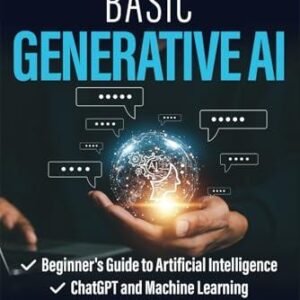In recent years, the landscape of education has undergone a significant transformation, spurred by rapid advancements in technology. At the forefront of this change is artificial intelligence (AI), which is revolutionizing the way educators teach and students learn. No longer confined to the realms of science fiction, AI is now a tangible force shaping classrooms, personalizing learning experiences, and even redefining the roles of teachers. As educational institutions across the globe increasingly adopt AI-driven tools and resources, it raises a pivotal question: How is this technology reshaping the learning journey? In this article, we will explore the multifaceted impact of AI on education, examining its potential to enhance engagement, promote inclusivity, and prepare students for an ever-evolving future. Join us as we delve into the ways AI is not just transforming educational methodologies, but also enriching the lives of learners around the world.
Table of Contents
- Harnessing AI to Personalize Learning Experiences
- The Role of AI in Enhancing Teacher Effectiveness
- Integrating AI Tools for Collaborative Learning Environments
- Addressing Ethical Considerations in AI-Driven Education
- Insights and Conclusions
Harnessing AI to Personalize Learning Experiences
In today’s dynamic educational landscape, the application of artificial intelligence is rapidly reshaping how students engage with their learning materials. By leveraging advanced algorithms, AI can analyse individual learning styles and preferences, allowing for a tailored educational experience that meets the unique needs of each student. This personalization can be achieved through:
- Adaptive Learning Technologies: Systems that adjust content delivery based on real-time analysis of student performance.
- Data-Driven Insights: AI tools that provide educators with comprehensive analytics, enabling them to refine their teaching strategies.
- Custom Learning Pathways: Personalized recommendations for resources and activities that align with each learner’s goals.
Moreover, the integration of AI into educational platforms fosters increased engagement and motivation among learners. By identifying patterns in student behavior, AI-driven systems can suggest timely interventions and enrichment opportunities, ensuring that no student falls behind. The potential applications include:
- Interactive Learning Modules: Content that reacts to student input, creating a dynamic and immersive learning environment.
- Virtual Tutors: Intelligent assistants available 24/7 to provide additional support and clarify concepts.
- Gamification Elements: AI-enhanced features that transform mundane tasks into challenging games, motivating learners to persist.
| Benefits of AI in Education | Description |
|---|---|
| Enhanced Engagement | Motivates students through interactive and immersive experiences. |
| Personalized Learning | Tailors content to fit individual learning speeds and styles. |
| Real-Time Feedback | Provides immediate assessments to guide learning processes. |
The Role of AI in Enhancing Teacher Effectiveness
Artificial Intelligence is revolutionizing the educational landscape by equipping teachers with innovative tools that significantly enhance their effectiveness. Through the use of AI-powered analytics, educators can now gain deeper insights into student performance, identifying strengths and weaknesses in real-time. This allows for personalized learning experiences that cater to individual student needs, fostering an environment where every learner can thrive. Key benefits include:
- Data-Driven Decision Making: AI systems analyse vast amounts of data to provide actionable insights for lesson planning and resource allocation.
- Tailored Learning Paths: Adaptive learning technologies enable teachers to customize curricula based on student progress and preferences.
- Efficient Administrative Tasks: Automating routine tasks such as grading and attendance tracking frees up valuable time for educators to focus on teaching.
Furthermore, AI can also support professional development for teachers by offering targeted training modules and feedback on instructional techniques. By harnessing AI for self-assessment and peer evaluations, educators can engage in a continuous cycle of improvement, collaborating with colleagues and sharing best practices. The integration of AI into teacher workflows fosters a culture of growth and innovation, aligning educational practices with the evolving needs of today’s learners. Key aspects to consider include:
- Continuous Learning: AI provides ongoing support and resources for professional growth.
- Improved Collaboration: AI tools facilitate communication among educators, creating a community of practice.
- Enhanced Engagement: Interactive AI applications can help teachers create more engaging and effective lessons.
Integrating AI Tools for Collaborative Learning Environments
As the landscape of education continues to evolve, the integration of AI tools into collaborative learning environments offers unique opportunities to enhance the educational experience. By fostering real-time communication and collaboration, these tools empower students to work together seamlessly, regardless of their physical locations. Key benefits of incorporating AI in this educational context include:
- Personalized Learning: AI can analyse individual learning styles and adapt resources accordingly, providing a tailored experience for each student.
- Enhanced Engagement: Interactive AI technologies, such as virtual classrooms or gamified learning platforms, capture students’ interests and encourage active participation.
- Data-Driven Insights: Educators can utilize AI analytics to assess group dynamics and individual progress, allowing for timely interventions and support.
Furthermore, the use of AI tools can streamline administrative tasks, granting educators more time to focus on teaching and mentoring. Schools that adopt these technologies often see improved collaboration through shared platforms where students can co-create projects, share resources, and receive instant feedback. The following table illustrates various AI tools currently transforming collaborative learning:
| AI Tool | Primary Function | Benefits |
|---|---|---|
| Google Classroom | Learning Management System | Streamlines assignment distribution and feedback. |
| Kahoot! | Game-Based Learning | Increases engagement through fun quizzes. |
| Slack | Collaboration Platform | Facilitates real-time communication and file sharing. |
Addressing Ethical Considerations in AI-Driven Education
As artificial intelligence increasingly becomes integrated into education, it is crucial to prioritize ethical considerations to ensure that the technology serves all students equitably. Among the primary concerns are issues of data privacy, as AI systems often rely on vast amounts of personal data to tailor learning experiences. Educators and institutions must implement strict data governance practices, including enforcing transparency about what data is collected and how it is used. This can help build trust among students and parents while safeguarding sensitive information, ensuring that learning environments remain safe and supportive.
Moreover, addressing the potential for bias in AI algorithms is essential to create an inclusive educational landscape. If AI tools are trained on unrepresentative data sets, the outcomes may inadvertently favor certain groups over others, exacerbating existing inequalities in education. Key strategies to mitigate bias include:
- Regular audits of AI systems to identify and rectify biased outcomes.
- Involving diverse teams in the development process to provide various perspectives.
- Utilizing multiple data sources to create a balanced dataset for training.
By actively engaging with these ethical dimensions, educators and technologists can foster a more equitable and effective integration of AI in learning environments.
Insights and Conclusions
As we stand on the precipice of a new era in education, the transformative impact of artificial intelligence cannot be overstated. From personalized learning experiences to streamlined administrative processes, AI is reshaping how we understand and engage with education. As educators, students, and policymakers embrace these innovations, it’s crucial to remain mindful of the ethical considerations and potential challenges that come with this technological evolution.
The journey toward an AI-integrated educational landscape is just beginning. By fostering collaboration among stakeholders—teachers, technologists, and learners alike—we can create a more inclusive, adaptable, and effective educational system. The potential for AI to enhance learning outcomes is immense, but we must also ensure that it serves to empower all students, providing them with the skills they need for a rapidly changing world.
As we move forward, let us remain committed to leveraging AI not just as a tool, but as a catalyst for meaningful change in education. Together, we can harness its power to inspire curiosity, foster critical thinking, and ultimately, unlock the full potential of every learner. The future of education is not only bright; it’s here, and it’s time to embrace the possibilities that lie ahead. Thank you for joining us on this journey of discovery and innovation in education.





